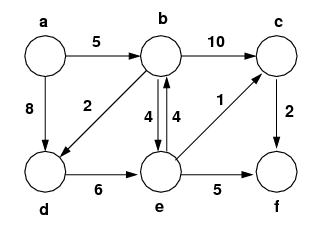 |
| Textbook. |
Analysis of Algorithms
Fall 2012
Recitation 13
DFS, Etc.
Week 13: Nov 20
Due (on time): 2012-12-03 23:59:59
Due (late): 2012-12-05 23:59:59
|
CS 3343 Analysis of Algorithms Fall 2012 Recitation 13 DFS, Etc. Week 13: Nov 20 Due (on time): 2012-12-03 23:59:59 Due (late): 2012-12-05 23:59:59 |
Recitation 13 should be submitted following directions at:
submissions
with deadlines
|


